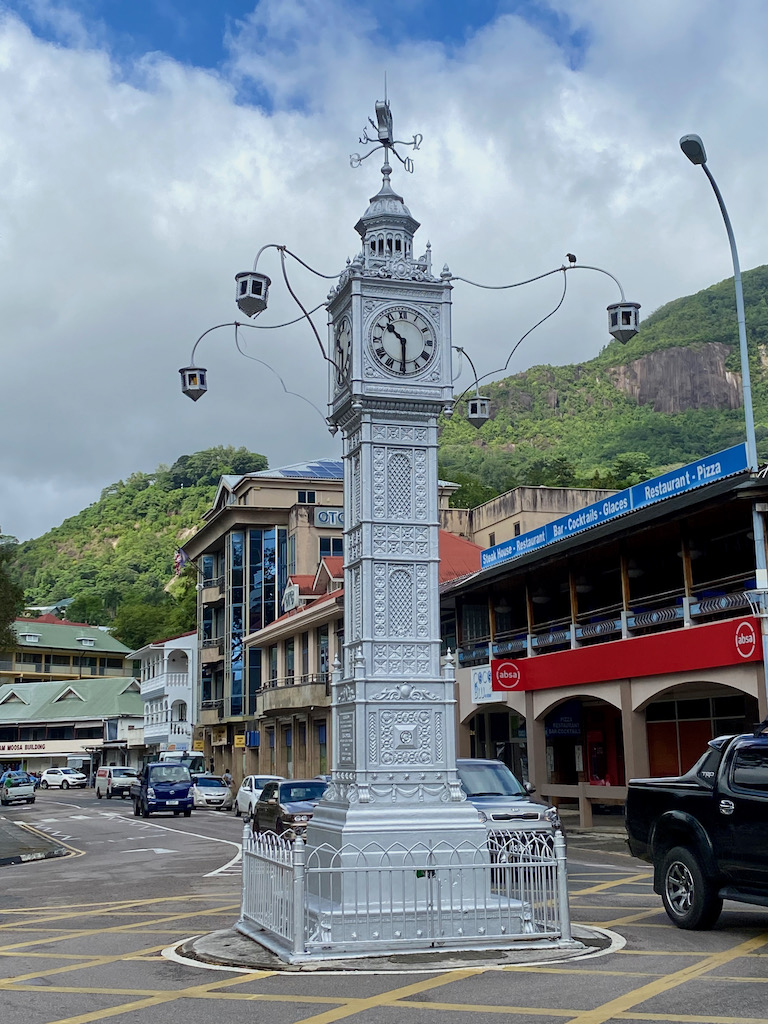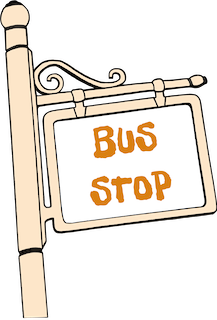Seychelles is an archipelago of 115 granite and coral islands located off the coast of East Africa in the Indian Ocean. Seychellois culture and society is an eclectic mix of French, British and African influences.
Three islands are mainly inhabited: Mahé, Praslin, and La Digue. The others, smaller, are mostly nature reserves that can be visited or are privately owned by Qatari, Indian or Saudi interests.
The economy of Seychelles essentially revolves around three axes: tourism, fishing, and tuna processing industry. The port of Victoria, its capital, is also the first transshipment port in the Indian Ocean.
Its climate
Seychelles has a tropical rainforest climate with high temperatures throughout the year. June and July are the driest months, and December, January, February the wettest.
Its flag


The current Seychelles flag consists of five oblique sashes: blue, yellow, red, white, and green which all originate in the lower-left corner.
Adopted on June 18, 1996, it brings together the colors of the country’s two main parties, the United People’s Party of Seychelles (red, white, green) and the Democratic Party (blue, yellow). It symbolizes the transition to the era of multiparty politics.
Another symbolic interpretation is also used: the blue symbolizes the Indian Ocean and the sky; the yellow the sun, source of life and light; the red the people; the white justice and harmony; and finally, the green earth and nature.
The short history of Seychelles in a few dates
1502
The Portuguese navigator Vasco de Gama discovered islands on the road to India. He then called them “Amirantes Islands.” However, it was likely that Arab navigators already knew about them for centuries.
1609
An English East India Company ship, lost in a storm on the road to India, sighted islands and decided to seek refuge there. They discovered an uninhabited place teeming with fresh water, fish, coconuts, birds, turtles, and giant tortoises. Back to England, and despite their bunkers bursting with their discoveries, the British did not continue to explore the islands.
1742
French Governor Bertrand-François Mahé de la Bourdonnais of “Isle de France” — present-day Mauritius — sends the first expedition to discover these islands. Its objective was to ensure the security of French positions on the road to India. Operation leader Lazare Picault and his men landed on the largest of the islands on November 21.
Back in Isle de France, as soon as Picault submitted his report on the riches of these lands to Mahé de la Bourdonnais, he was sent back to deepen their investigation. The archipelago was baptized “Islands of La Bourdonnais” and the largest of its islands, Mahé. One year later, the French finally landed on Praslin, which they then called “Island of Palmes.”
But when Governor Mahé de la Bourdonnais was replaced, the islands were forgotten.
Not by everyone, because at that time, Praslin had become a hiding place for pirates!
1756
A new interest in the islands was reborn. Mahé de la Bourdonnais’ successor sent a new expedition to Mahé to seize the island and prevent the English from landing there. At this time, the island was renamed after Louis XV’s Minister of Finance, Jean Moreau de Séchelles.
Once again, the French disembarked only to deposit a stone engraved with the French coat of arms, claiming it was French land. This stone is the oldest monument in Seychelles and is now on display at the National Museum of Victoria.
Following this expedition, the island is again forgotten for twelve more years.
1768
New and more regular expeditions resume getting to know the island better. The Island of Palmes becomes the Island of Praslin in homage to the Minister of the Navy, Gabriel de Choiseul, Duke of Praslin.
1778
Creation of the town “King’s Establishment,” present-day Victoria, and its port. It then became the stationing point for privateer ships tasked with preventing English ships from sailing in the Indian Ocean. By this time, the British have taken control of most of India’s wealth.
1794
On May 16, the English attacked Seychelles. French Governor Quinssy, who had a total of 60 rifles, did not have the resources to defend himself against the 1,200 soldiers of the English commander Newcome. The French surrendered the day after the attack, but were allowed to maintain their possessions and administration. Séchelles became Seychelles, the English version of the name.
The English did not stay long on the island, and it was in the Napoleonic defeats of 1811 that they took possession of it. That same year, the British king sent Barthelemy Sullivan to replace Quinssy as governor of Seychelles.
It was not until three years later, in 1814, that the King of France formally ceded the Seychelles and Mauritius to the British.
The significant change following the arrival of British sovereignty was the abolition of slavery in 1812, but it was not until 1836 that this ban was effectively applied on all archipelago islands.
1835
“The King’s Establishment” became Victoria, named after the Queen of England.
The first inhabitants of Seychelles
In the early day of Seychelles, about 30 French people lived on the island, reigning supreme over some 200 black slaves. They subsisted on the cotton, coffee, and indigo trade but also agriculture — rice, cassava, corn, and all kinds of vegetables.
These first French settlers, who didn’t want to stay permanently in Seychelles, returned to Mauritius as soon as their contracts ended.
Between 1800 and 1810, slaves deported from black Africa and immigrants from India, Europe, or Madagascar arrived in Seychelles. The population then increased from 2,000 to 4,000 inhabitants.
It was a prosperous period for “The King’s Establishment,” which developed rapidly, thanks to colonial products selling well in Europe. Agriculture and fishing were also flourishing.
1836
Slavery was abolished entirely and the slaves, eventually freed, began to work for a pittance.
In 1839, they obtained the right to choose between continuing to work for their employer or becoming self-employed. Many chose the second option to grow food on a piece of land ceded by the government. This change resulted in the loss of a large number of plantations.
A population of fishermen, artisans, and small peasants then developed on the island.
1861
Arrival of the first groups of freed slaves.
1862
Mahé is devastated by the island’s only natural disaster, a landslide — known today in Seychelles as the Creole Lavalas — which killed around 100 people and destroyed 30,000 palm trees. The country entered a significant economic crisis.
However, the waves of immigration are not over. Arab and European slave traders intercepted by the English navy were taken to Victoria, where the slaves were freed.
At the end of the 19th Century, it was the turn of African leader opponents of British imperialism to be sent to Seychelles.
In 1900, the population reached 20,000 inhabitants. It was during this same period that the first hospital and the first hotel were built.
The economy flourished again, thanks in part to the opening of the Suez Canal, which made exporting to Europe easier. Seychelles added copra oil, vanilla, cocoa, and cloves to their export list.
1976
Seychelles became an independent nation.
Victoria, the capital and biggest town of Seychelles


Located on the island of Mahé, the population of Greater Victoria was estimated in 2021 to be 22,881 inhabitants out of a total Seychelles population of 98,889.
Suffice to say that it’s a small capital that one must visit on foot. There isn’t much to discover, but walking through the busy streets is pleasant, and you get a glimpse into Seychellois life.
The curiosities that we encountered during our stroll.
The clock tower


In 1901, the year of Queen Victoria’s death, Seychelles was part of the British Empire. The then-English governor naturally suggested building a tribute in memory of the deceased. He proposed this clock tower in the style of Big Ben. It was made in England and then transported to Seychelles to be installed in the city center.
The only problem, the bell’s mechanism didn’t work. It was not until 1999 that an electronic system replaced it, eventually allowing the Seychellois to appreciate the bell’s sound!
Sir Selwyn Selwyn-Clarke Market, named after one of the governors of Seychelles






Built in 1840 and renovated in 1999, it stands as Victoria’s most vibrant and colorful place on Saturday mornings. The best place to buy local fruits and vegetables, spices, and above all, fresh fish.
There is also an array of shops selling clothes, local artwork, delicious baked goods, and of course, souvenirs.
Cathedral of Our Lady of the Immaculate Conception


This cathedral is the mother church of the Catholic Diocese of Seychelles.
It was built on the spot where the first Seychelles Catholic church was built in March 1851 by the French Father Léon d’Avanchers.
The only Seychellois bishop, Félix Paul who died on November 21, 2001, is buried inside the cathedral.
The cathedral has undergone many renovations over the years. In 1993, it was completely redone, except for the exterior walls. The last renovation was completed in 1995 in which the Seychellois sculptor Egbert Marday fashioned the tabernacle and the carved doors.
The Hindu Temple Arul Mihu Navasakthi Vinayagar


This temple is the only Hindu temple in Seychelles. It was built in 1992 and named after Lord Vinayagar, the Hindu god of security and prosperity.
The Domus






This magnificent residence, owned by the Roman Catholic priesthood in Victoria, was built in 1934 for the Swiss missionaries serving the Diocese of Port Victoria. The peculiarity of this two-story granite building is that an aqueduct supplies it with drinking water from a nearby artesian well. In the 1960s, the Domus housed around 10 Capuchin missionaries. Today, only three priests occupy the building, the rest of its rooms serving as administrative offices.
We didn’t spend that much time in Victoria. Just half a day to go to the market. If you are staying for one or two more days, here are some places you can visit.
National History Museum
Created in 1964, it exhibits the unique historical and cultural heritage of Seychelles.


One can see there, among other things:
➛ the Portuguese Nautical Atlas of the Indian Ocean of 1519 which included Seychelles for the first time
➛ the historical stone of possession placed on the island by the French
➛ one of the smallest Queen Victoria figurines in the world
➛ as well as objects of cultural interest that illustrate the traditions and lifestyles of the island’s first inhabitants.
Seychelles Natural History Museum
This museum hosts Seychelles’ flora, fauna, and geological history exhibitions and highlights its main environmental concerns. Its goal is to promote the attitudes and positive actions necessary to conserve the country’s natural heritage.
The National Botanical Garden
The botanical garden has existed since 1901. Located at Mont Fleuri on 6 hectares, it houses an extensive collection of ancient, exotic, and endemic plants. Giant tortoises from Aldabra Atoll and fruit bats eat or sleep in tall trees.
The latest attraction built is an Orchid House, with colorful orchids, including native varieties.
Final point
I enjoyed discovering the history of Seychelles. We hear a lot about the paradisiacal beaches of these islands, but the history of the country is just as important to me. And their story is fascinating. More than once, these islands have been discovered and forgotten, despite their location and natural wealth. And while Seychelles is a luxury vacation destination these days, one should remember that the first inhabitants were slaves – an evolution that might have then seemed impossible.
The image of Seychelles I will keep in mind is the beauty of its landscapes but also the harmonious mixture of the people’s cultures who have crossed the country’s history, the kindness and authenticity of its inhabitants, and the particular rhythm of the island — the morning’s excitement, the sun rises at 6.15 am and is already hot, and the quiet of the evenings, which start early at 6.15 pm, at nightfall.
